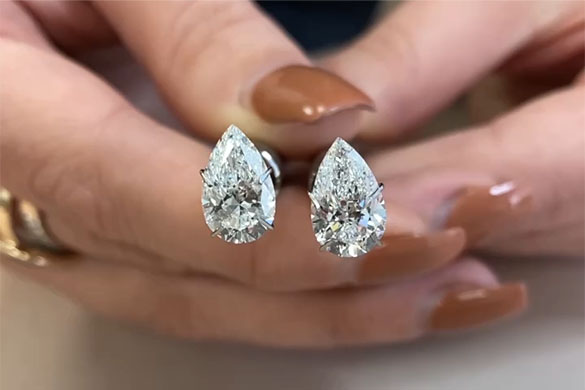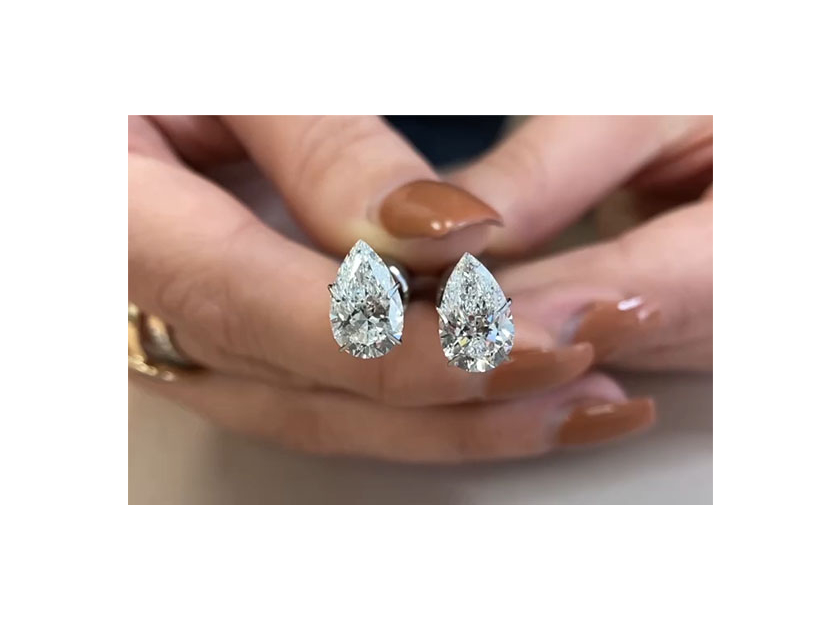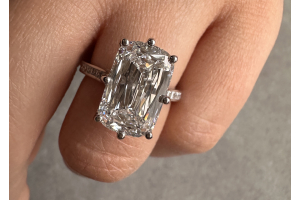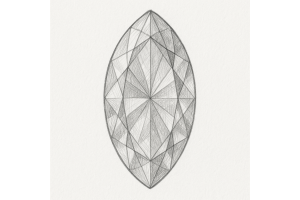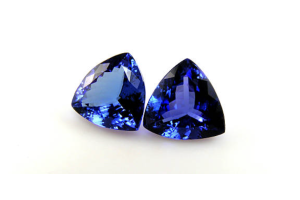USD
/
USD
/
Shipping to:
Currency:
Lab-Grown Diamonds vs. Moissanite: A Comprehensive Comparison of Properties and Pricing
In the world of gemstones, the allure of diamonds has been unmatched for centuries. However, recent advancements in technology have given rise to lab-grown diamonds and moissanite, two alternatives that have gained significant popularity. This article aims to delve deep into the main differences between lab-grown diamonds and moissanite, examining their physical properties and the significant price disparities that set them apart.
Lab-Grown Diamonds: Nature Replicated in a Lab
Lab-grown diamonds, as the name suggests, are diamonds that are created in a controlled laboratory environment. Despite being man-made, they possess the same physical, chemical, and optical properties as natural diamonds. These gems are grown using advanced technological processes that mimic the high pressure and high temperature (HPHT) conditions present deep within the Earth's mantle where natural diamonds form.
Physical Properties of Lab-Grown Diamonds
-
Composition: Lab-grown diamonds are composed of carbon atoms arranged in a crystalline structure known as a diamond cubic lattice. This gives them the same chemical composition as natural diamonds.
-
Hardness: Diamonds are renowned for their exceptional hardness, scoring 10 on the Mohs scale of mineral hardness. This property makes them ideal for use in jewelry as they are highly resistant to scratches and damage.
-
Optical Properties: Lab-grown diamonds exhibit the same brilliance, fire, and sparkle as natural diamonds due to their identical crystal structure. They possess the ability to refract light in a way that creates the mesmerizing play of colors that diamonds are famous for.
-
Color: Lab-grown diamonds are available in a wide range of colors, including colorless, near-colorless, and fancy colors. Just like natural diamonds, the presence of trace elements can impart different hues to lab-grown diamonds.
-
Clarity: Lab-grown diamonds can have varying levels of clarity, just like natural diamonds. They can be internally flawless or contain inclusions, which are tiny imperfections within the stone.
Moissanite: A Unique and Brilliant Alternative
Moissanite is a naturally occurring mineral, silicon carbide, that was first discovered in a meteor crater by scientist Henri Moissan in 1893. While moissanite can be found in nature, the moissanite used in jewelry today is almost exclusively lab-grown due to its rarity in natural form. It gained popularity as a diamond alternative due to its remarkable brilliance and fire.
Physical Properties of Moissanite
-
Composition: Moissanite has a different chemical composition than diamonds. Its chemical formula is SiC, while diamonds are composed of pure carbon. This gives moissanite its own unique set of properties.
-
Hardness: Moissanite is almost as hard as diamonds, ranking at 9.25 on the Mohs scale. This makes it highly resistant to scratches and suitable for everyday wear.
-
Optical Properties: Moissanite exhibits even greater brilliance and fire than diamonds due to its higher refractive index. This gives moissanite a unique rainbow-like sparkle that sets it apart from diamonds.
-
Color: While moissanite is generally near-colorless, it can exhibit a slightly yellow or greenish tint under certain lighting conditions. Advances in manufacturing techniques have improved the color of lab-grown moissanite.
-
Clarity: Moissanite typically has a higher clarity than natural diamonds due to its crystal growth process. It often lacks the inclusions that can be found in diamonds.
Price Comparison: Lab-Grown Diamonds vs. Moissanite
One of the most significant factors influencing the choice between lab-grown diamonds and moissanite is their price difference. Lab-grown diamonds are priced significantly lower than their natural counterparts. While the price of natural diamonds is determined by factors such as carat weight, color, clarity, and cut, lab-grown diamonds are usually priced based on the cost of production. This results in lab-grown diamonds being up to 40-70% more affordable than natural diamonds of comparable quality.
Moissanite, on the other hand, is even more affordable than lab-grown diamonds. The price of moissanite is generally a fraction of the cost of diamonds of similar size and appearance. This affordability has contributed to moissanite's popularity as a budget-friendly alternative to diamonds.
Ethical and Environmental Considerations
Lab-grown diamonds and moissanite both offer ethical and environmental advantages over natural diamonds. The mining of natural diamonds often involves environmentally damaging practices and has been associated with issues like habitat destruction, displacement of local communities, and conflict financing (often referred to as "blood diamonds"). Both lab-grown diamonds and moissanite provide consumers with options that have a reduced negative impact on the environment and do not contribute to unethical practices.
Conclusion: Choosing the Gem that Fits
In the end, the choice between lab-grown diamonds and moissanite comes down to personal preferences, priorities, and budget. Lab-grown diamonds offer the allure of a genuine diamond with a smaller price tag and ethical peace of mind. On the other hand, moissanite presents a brilliant and affordable alternative that stands out with its unique sparkle.
When making a decision, it's essential to consider factors like budget, desired appearance, and the ethical and environmental implications of your choice. Both lab-grown diamonds and moissanite have their own exceptional qualities, and the right choice depends on what resonates most with each individual.
